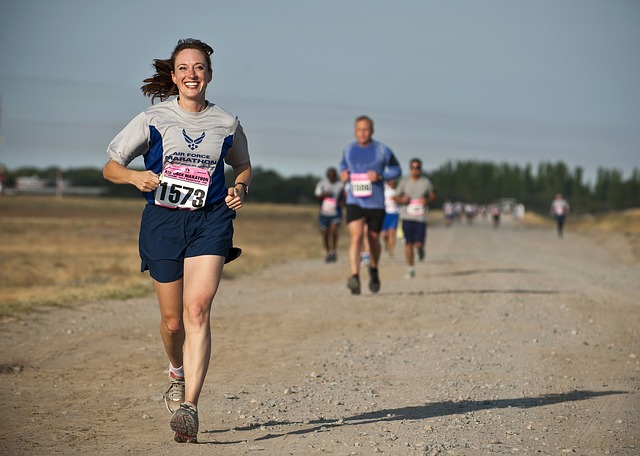Once all the hard training for a marathon is done, it’s all about maximising your potential. Missing out on your carb intake can mean you fall well short of that.
Start early
As well as a good breakfast, your first carb intake during the race is key. With a little bit of nervous energy, you may well not eat between breakfast and the race start, which in a big city marathon like London or New York, could be a couple of hours.
I’ve spoken to lots of people who don’t have a gel or carb drink until nearly an hour into the race, meaning their digestion is much slower and the benefit of the fuel is achieved more slowly as a result.
I recommend having some form of carbohydrate within the first 30 minutes. There’s plenty of research to back this up, but if you struggle eating when you run, have a few sips of a sports drink like Lucozade or a more tailored drink like Tailwind to keep things ticking over until you’re ready.
Keep fuelling
Forget fuelling by distance would be my advice. If you plan to fuel at set miles, you’ll never get the full benefit. Remember, our digestive system doesn’t work in miles, it works at a rate based on biology, not geography. It has set amounts of carbohydrate it can process per minute/hour, so we need to work with that.
Per hour, the human body can process up to 60g of glucose derived carbohydrates and 30g of fructose derived carbohydrates. To avoid an upset stomach though, you’d be best not to eat the equivalent of 2-3 gels in one go to reach these numbers.
Depending on the brand and your own tolerance for eating when running, consume some carbs every 20-30 minutes to get somewhere close to the maximum fuelling amounts.
Don’t fuel at the end (perhaps)
In the best circumstances gels take around 20 minutes to impact your blood sugar levels. A lot of people talk about having a gel at mile 22, and let’s face it, mile 22 is hardy the best circumstances, so digestion will be slower again.
If you do have a gel here, at 8:00-9:00 pace, you’ll have less than 10 minutes at the end when it’s put into action. The chances of it causing stomach upset or just making you feel a bit sick are probably higher than any marginal benefits you might gain. The risk may be worth it for a caffeinated gel depending on the other gels you’ve had along the way. Too much caffeine can have all sorts of grim side effects if you’re not used to it.
Use the hills
If your marathon is particularly undulating such as the Loch Ness or New York City marathons, I’d advise fuelling on a downhill if it falls just before or just after your next gel is due.
You’re at 47 minutes about to run downhill and your plan says gel at 50 minutes. Eat it now, the loss of arm movement is less impactful downhill (provided it’s not too steep) than on a flat or uphill section. Your heart rate also drops running downhill typically, so it has less chance of making you feel unwell.
Fuel early, fuel often
Go into the race with a plan that has a degree of flexibility. Try out your fuelling strategy on one of your long runs at close to race pace/effort to see how you respond. If you do these things, you’ll run far closer to your potential on the day.
Written by Kyle Brooks, Running Coach based in Norwich, Norfolk

